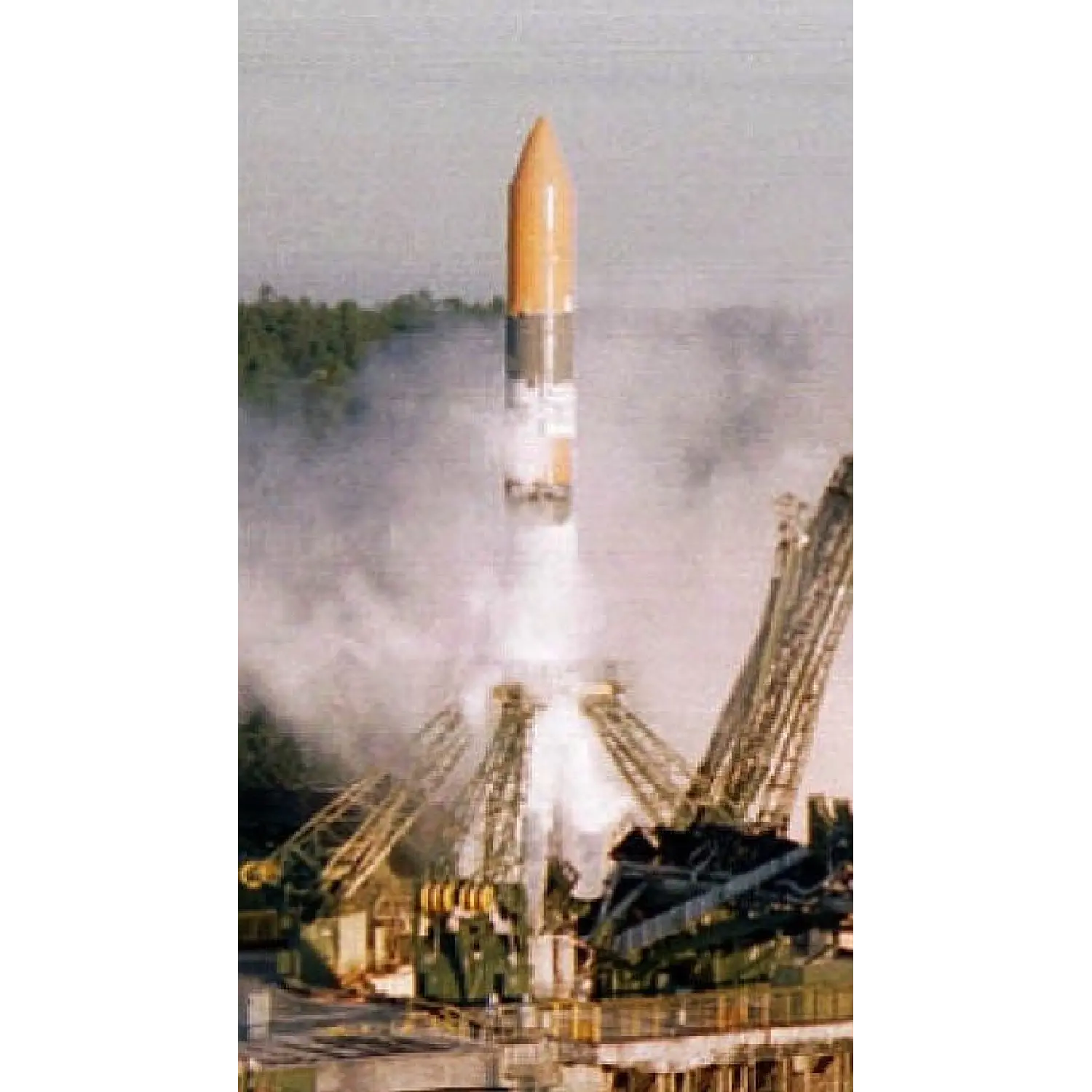Interbol 2, Magion5 & Victor
Launch Success
Liftoff Time (GMT)
05:22:01
Thursday August 29, 1996
Mission Details
Launch Notes
Last flight of Molniya-M /Block SO-L.
Interbol 2
The Interbol Project is a multi-national effort that consists of four spacecraft: two main spacecraft of the Prognoz series, made in Russia, each with a small subsatellite (Magion) made in Czechoslovakia. The main objective is to study the physical mechanisms responsible for the transmission of solar wind energy to the magnetosphere, its storage there, and subsequent dissipation in the tail and auroral regions of the magnetosphere, ionosphere, and atmosphere during magnetospheric substorms. A ground-based support group will provide coordinated and simultaneous ground-based data of many types, including observations from auroral and polar cap regions. Interball is an IACG-related mission. Key physical parameters will be generated, and will be available for exchange with other projects. Campaigns for intercomparison with the Wind and Geotail spacecraft are expected. One pair of spacecraft, Tail Probe and its subsatellite S2-X (X for the first letter of the Russian word for ``Tail''), was launched into the magnetospheric tail. The second pair, Auroral Probe and S2-A (A for ``Auroral''), will have an orbit that crosses the auroral oval to observe the acceleration of auroral particles and the flow of electric currents that connect the magnetospheric tail with the conducting ionosphere. To study the equilibrium tail structure, during about half of each year the Tail Probe pair will cross the main parts of the magnetotail every four days. The Auroral Probe pair will support the Tail Probe pair with auroral region measurements. Each main spacecraft has more than twenty scientific instruments. The spacecraft is cylindrical, with spin axis toward the sun (within 10 degrees), and with spin period of ~120 s. The electric and magnetic field sensors are on booms connected to the ends of the solar panels.
Low Earth Orbit
1 Payload
Magion 5
Magion 5 is an experimental sub-satellite of Interbol 1.
Low Earth Orbit
1 Payload
Victor
Victor is an experimental vehicle, intended to evaluate in-orbit behaviour of low-cost space technologies. It weights 32 kg in-orbit (34.5 kg mounted onto the LV), and has dimensions 340 × 340 × 450 mm. It carries two video cameras, oriented for earth-imaging, as well as transceivers in both UHF and S bands. Electrical power is provided by four 88-Si cells solar panels, with an end-of-life electrical power of 8W. Its position is determined by means of a 3-axis, flux-gate magnetometer, as well as both solar and horizon sensors, while its attitude is 3-axes controlled by magnetic coils and reaction wheels, with an expected pointing precision of 0.5 deg.
Low Earth Orbit
1 Payload
35 kilograms
Rocket


Manufacturer
RKK EnergiyaRocket
Height: 41.26m
Payload to Orbit
LEO: 6,200 kg
GTO: 2,400 kg
Liftoff Thrust
4,391 Kilonewtons
Fairing
Diameter: 2.58m
Height: 6.74m
Stages
4
Strap-ons
4
Launch Site
Stats
Molniya-M
259th
Mission
2nd
Mission of 1996
1996
54th
Orbital launch attempt